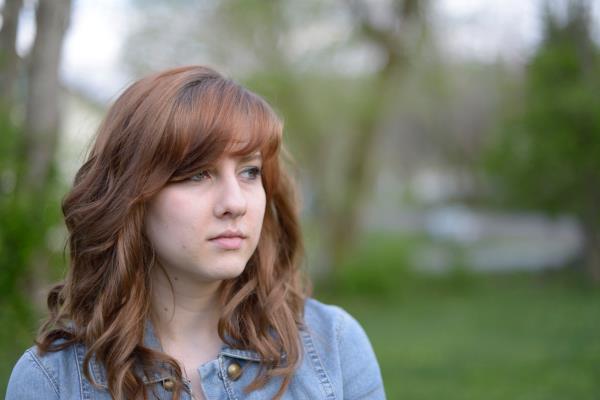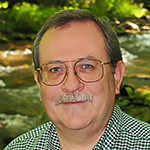When taking portraits of people that are not looking directly at the camera but looking out of the frame at an unseen object, the image is often more interesting, raising the question, “What is she looking at?”
In the picture in figure 1, I asked the subject to look away from the camera and then used the rule of thirds to position her on the left side of the frame, looking to the right.

Notice an important thing about this particular image. There is room between her face and the edge of the frame in the direction she is looking. This is called “breathing room.” This technique calls attention to the fact that the subject is looking away from the camera at an object that we can’t see. It feels natural that way. The negative space adds spice to the image.
If I took this same picture but placed the young woman close to the right edge of the frame, so that it seems her face is pressed up against the right side, she has no breathing room and the image feels almost claustrophobic (Figure 2).

Although I am still obeying the rule of thirds in figure 2, the image is not appealing at all. It feels crowded. The space behind her means nothing and adds nothing to the image.
Therefore, when you are taking pictures of people, have them look away from the camera to add suspense and interest. However, make sure you allow some breathing room when you use the rule of thirds.
Keep on capturing time…
Darrell Young

Darrell Young is an active member of the Nikonians User Community, Nikon Professional Services (NPS), Professional Photographers of America (PPA), North American Nature Photography Association (NANPA), and the author of 24 photography books from NikoniansPress and Picture and Pen Press, through Rocky Nook. You may review a few of Darrell’s Nikon books here. He has been an avid photographer since 1968 when his mother gave him a Brownie Hawkeye camera.
This website was created to support the readers of his educational books, photography students, and clients. Visitors to this website will find articles and reviews designed to inform, teach, and help you enjoy your photographic journey.
This works with wildlife and most any moving subjects as well. Giving the space in front of them gives the feel of motion.
I enjoy the books and was surprised to see you live just south of me. Rogersville,TN
Hi Darrell,
I have a white balance setting question that I didn’t find addressed in “Mastering the Nikon D810” that I’m reading avidly.
I use a WhiBal model WB7-PC, the calling card size, neutral gray reference with my D810. Although I take a reference image with the card for post-processing adjustment, I prefer the PRE white balance option. The camera will indicate a successful reading, (i.e.: Good shown in the Control Panel) even though the frame is not fully filled by the card. In this case does stray light from around the card corrupting the reading? Also, which sensors adjust white balance? The D810 has four metering options. Does the pre-set white balance depend on the selected option while setting white balance?
I appreciate any guidance on setting white balance with PRE.